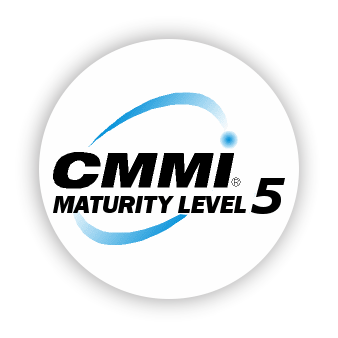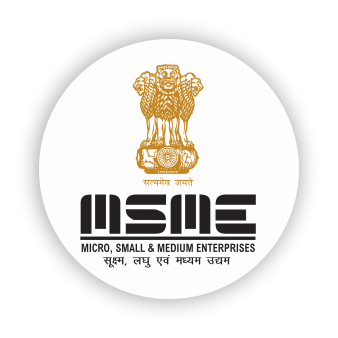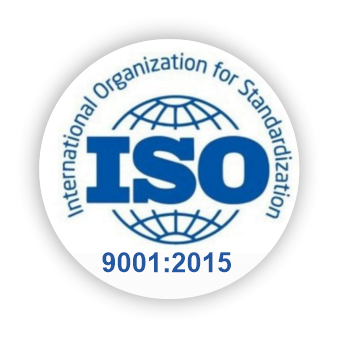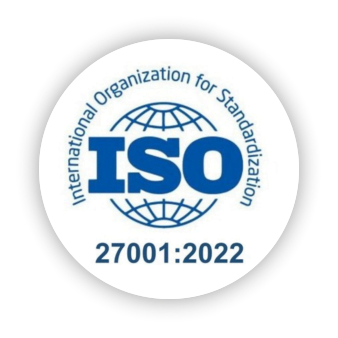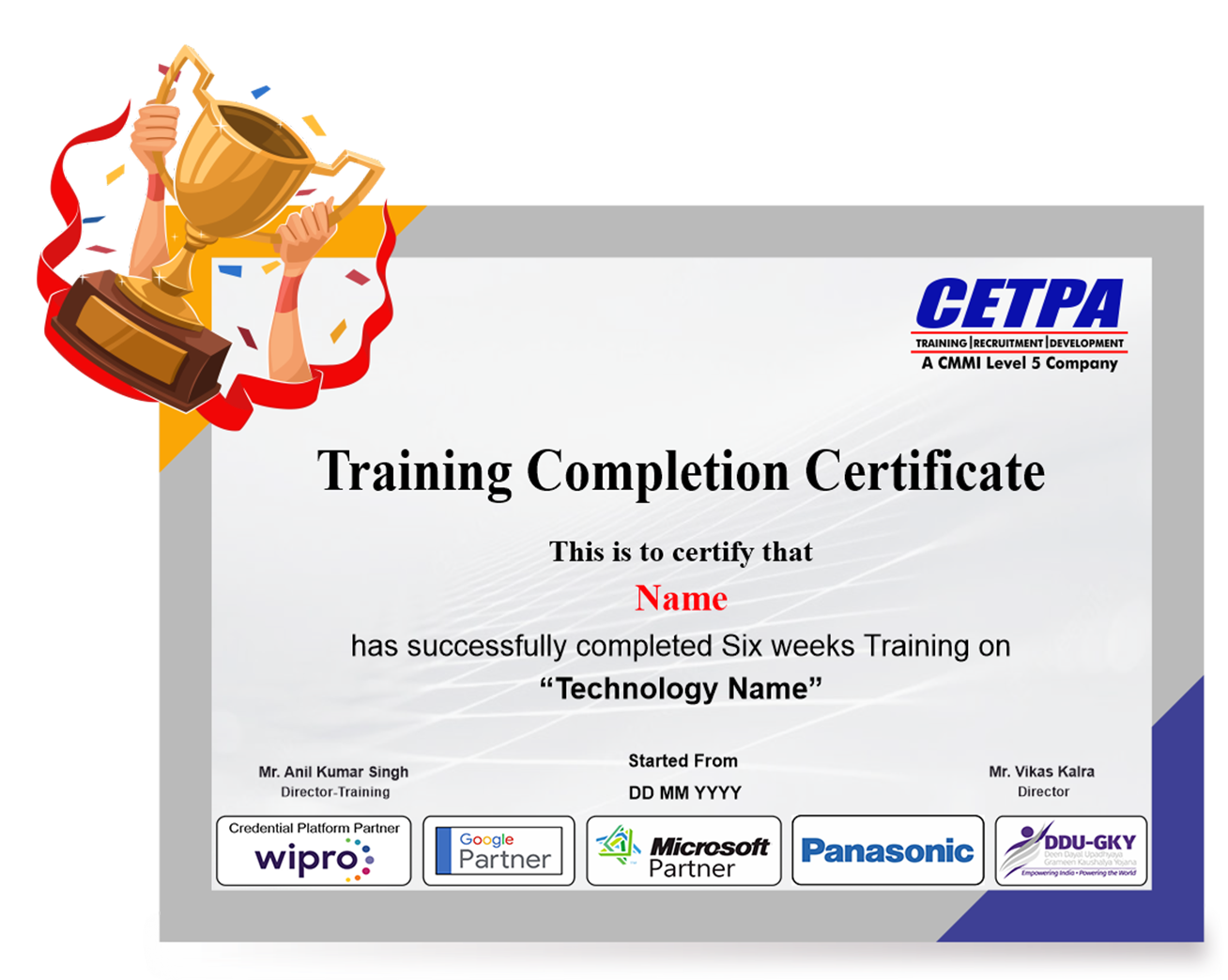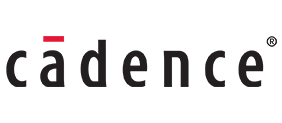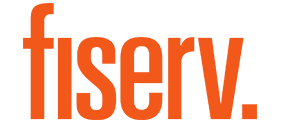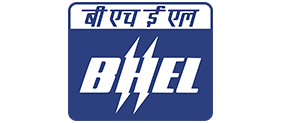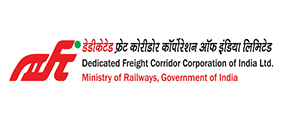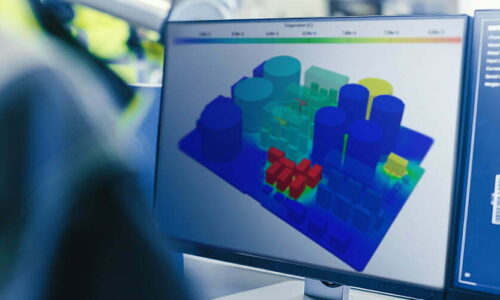Full Stack Developer Course with Java Certification Training
Discover the depths of Full Stack Developer Course with Java. Join us now to gain comprehensive insights into Full Stack Developer Course with Java from a seasoned professional.
![]() 5.0 out of 5 based on 102 user reviews. |
5.0 out of 5 based on 102 user reviews. |  |
|  |
|  |
| 
Enquire Now
Accreditations & Affiliations
Training Features
Best Full Stack Java Developer Training Institute in Delhi NCR
This Full Stack Java Developer course is prepared to offer you a complete sense of backend, frontend, database layer, and other web development techniques with the spice of Java. Developing components that are visible to customers as they access the application is called front-end development. The content that supports an application's visual features is referred to as back-end development. The database layer stores data and assists the application in retrieving data from the other two layers and this all makes up the complete Full Stack course with java training.
In this program, you will learn to build a completely functional web application using the Java programming language. Also, you learn about Java server pages and servlets from the ground up.
CETPA is an ISO-certified training company, serving industry and students well for more than 20 years and still leading and expanding throughout the globe. CETPA already trains 2 lakh+ students and is moving forward to grave more. CETPA has been awarded as the best software training institute for providing quality education for 5 consecutive years.
- Instructor-led Live and Recorded Classes.
- More than 30+ new high-end technologies, like SQL and Java.
- Live labs(for real-time knowledge).
- Create with Opportunity to create real-time applications like Facebook...
- Live workshops with industry experts providing career guidance.
- An internship letter on the company's letterhead.
- ISO-certified training company.
- Globally accepted certificates.
- Premium job placements with leading Technical companies and MNCs.
CETPA's detailed Job Oriented program will help you land a career as a Full Stack Developer with a proper Full Stack Java Developer Course.
Get a personal career counselor just for you and solve all your queries in a few minutes with CETPA's experienced counselors who are serving the industry for more than 10 years. This gives you an opportunity to become prepared for the interview and upgrade your resume with better skills.
Interview Preparation
- Virtual tests to help you get through the technical round.
- Delicate training to ensure that you make a lasting impression during the interview.
Live-projects
Real-time projects for better theoretical and practical knowledge under the guidance of industry experts.
Kickstart your Full Stack program with Java to find all the things that are undiscovered for you and explore the complete program with your sense.
Bone up on software development foundations, Agile and Scrum techniques, Java and data structures, GIT for version control, and Maven for project dependency management.
Reacquaint yourself with the back-end technologies by integrating knowledge of SQL, Java Servlets, and relational database ORM with Hibernate. Learn how to use JDBC to link databases and RESTful web services.
Build 3-tier applications with Spring framework, Angular, JUnit5, and SOAP, and grasp UI abilities with comprehensive HTML and CSS. Learn about Jenkins, a common DevOps tool, that allows you to operate concurrent engineering and automation.
Talk To Advisor
MODE/SCHEDULE OF TRAINING:
| Delivery Mode | Location | Course Duration | Schedule (New Batch Starting) |
|---|---|---|---|
| Classroom Training (Regular/ Weekend Batch) | *Noida/ *Roorkee/ *Dehradun | 4/6/12/24 Weeks | New Batch Wednesday/ Saturday |
| *Instructor-Led Online Training | Online | 40/60 Hours | Every Saturday or as per the need |
| *Virtual Online Training | Online | 40/60 Hours | 24x7 Anytime |
| College Campus Training | India or Abroad | 40/60 Hours | As per Client’s need |
| Corporate Training (Fly-a-Trainer) | Training in India or Abroad | As per need | Customized Course Schedule |
Course Content
Module 1: Web Programming Introduction
- Architecture of a website
- Different technologies in making the website
- Web Development Introduction
Module 2: HTML-Introduction
- History of HTML
- What you need to do to get going and make your first HTML page
- What are HTML Tags and Attributes?
- HTML Tag vs. Element
- HTML Attributes
Module 3: HTML-Headers
- Title
- Base
- Link
- Styles
- Script
- Meta
- HTML Basic Tags
- HTML Formatting Tags
- HTML Color Coding
Module 5: HTML-Grouping Using Div Span
- Div Tag
- Span Tags
Module 6: HTML Semantic Elements
- <article>
- <aside>
- <details>
- <figure>
- <footer>
- <header>
- <main>
- <mark>
- <nav>
- <section>
- <summary>
- <time>
Module 7: HTML-Lists
- Unordered Lists
- Ordered Lists
- Definition list
Module 8: HTML-Images
- Image and Image Mapping
- Background Images
Module 9: HTML-Hyperlink
- Anchor Tag.
- URL - Uniform Resource Locator
- Relative and Absolute Address
Module 10: HTML-Table
- < table >
- < th >
- < tr >
- < td >
- < caption >
- < thead >
- < tbody >
- < tfoot >
- < colgroup >
- < col>
Module 11: HTML-I frame
- Using I frame as the Target
Module 12: HTML-Form
- HTML Forms
- HTML Form Attributes
- HTML Form Elements
- HTML Input Types
- HTML Input Attributes
- HTML Input form Attributes
- < text area >
- < button >
- < select >
- < label>
Module 13: HTML Graphics
- HTML Canvas Graphics
- HTML SVG Graphics
Module 14: HTML Media
- HTML Media
- HTML Video
- HTML Audio
- HTML Plug-in
- HTML YouTube
Module 15: HTML APIs
- HTML Geolocation
- HTML Drag/Drop
- HTML Web Storage
- HTML Web Workers
- HTML SSE
Module 1: CSS Introduction
- What is CSS?
- Why Use CSS?
- CSS Syntax
Module 2: CSS Core Properties
- CSS Color
- CSS Backgrounds
- CSS Box Model
- CSS Borders
- CSS Margins
- CSS Paddings
- CSS Box Sizing
Module 3: CSS Units
- Absolute Units
- Relative Units
- Max-Width
- Min-Width
Module 4: CSS Styling
- CSS Text
- CSS Fonts
- CSS Outline
- CSS Alignment
- Important
Module 5: Styling Elements
- Links
- Lists
- Dropdowns
- Tables
- Images
- Image-Sprite
- Image-Filters
- Clip-Path
- Forms
Module 6: Navbar
- Vertical-Navbar
- Horizontal-Navbar
Module 7: CSS Selectors
- Simple Selectors
- Combinator selectors
- Pseudo-class selectors
- Pseudo-elements selectors
- Attribute selectors
Module 8: CSS Positions
- Position
- Z-Index
- Float
- Clear
- Overflow
Module 9: CSS Layouts
- Display
- Block
- Inline
- Inline-Block
- Grid
- Flex-Box
Module 10: CSS Transformation
- CSS 2D Transforms
- CSS 3D Transforms
- CSS Transition
- CSS Animations
Module 11: CSS Responsive
- Responsive Introduction
- Responsive Viewport
- Responsive Breakpoint
- Media Queries
Module 1: Introduction
- What is JavaScript?
- Why Use JavaScript?
- Syntax
- Statements
- Comments
Module 2: Language Syntax
- Data Types
- Variable Declarations
- Var vs. Let
- Constant
- Dynamic Type
- Type of
- Type Conversion
- Objects
- Arrays
Module 3: Operators
- JavaScript Operators.
- Arithmetic Operators
- Assignment Operators
- Comparison Operators
- Equality Operators
- Ternary Operators
- Logical Operators
- Bitwise Operators
Module 4: Control Statement
- if
- else
- if/else
- switch/case
Module 5: Loop Statement
- for
- for/in
- for/off
- while
- do/while
- Infinite loop
- Break
- Continue
Module 6: JavaScript HTML DOM
- HTML Document object Model
- DOM Methods
- DOM Documents
- DOM Elements
- DOM HTML
- DOM Forms
- DOM CSS
- DOM Events
- DOM Event Listener
- DOM Navigation
- DOM Nodes
- DOM Collections
- DOM Node Lists
Module 7:JavaScript HTML BOM
- HTML Browser object Model
- JS Window
- JS Screen
- JS Location
- JS History
- JS Navigator
- JS Popup Alert
- JS Timing
- JS Cookies
Module 8: Array
- Array Introduction
- Adding Element
- Deleting Element
- Modifying Element
- Searching Element
- Emptying Element
- Combining and Slicing Array
- Spread Operator
- Looping with Array
- Filtering with Array
- Mapping with Array
- Reducing an Array
Module 9: Functions
- Function Declarations.
- Hoisting
- Arguments
- The Rest Operators
- Default Parameters
- Getter and Setters
- Try and Catch
- Local vs. Global Scope
- this keyword
Module 10: Objects
- Basics
- Factory Functions
- Constructor
- Dynamic Nature of Object
- Functions are Objects
- Value vs. Reference Type
- Enumerating Properties of an Object
- Cloning an Object
- String
- Date
Module 11: Built-in Objects
- Number
- Math
- String
- Array
- Date
- Boolean
- Regex
Module 12: Events
- Introduction
- Mouse Events
- Keyboard Events
- Form Events
- Document/Window Events
Module 13: Introduction to OOP Concept
- Prototype, Module pattern
- Augmenting type
- Closure
- ES6 Introduction
- Let & Const
- Arrow Functions
- Class and Inheritance
- Rest and Map Operators
- Export and Import
- Modules
Module 14: JavaScript Web API
- API Introduction
- Forms API
- History API
- Storage API
- Worker API
- Fetch API
- Geolocation API
Module 15: JavaScript AJAX
- AJAX Introduction
- AJAX XMLHttp
- AJAX Request
- AJAX Response
Module 16: JavaScript JSON
- JSON Introduction
- JSON Syntax
- JSON Data Types
- JSON Parse
- JSON Stringify
- JSON Objects
- JSON Arrays
- Getting started with jQuery
- Selecting elements
- Manipulating the page
- Traversing the DOM and chaining
- jQuery Utility Methods
- Handling events and event delegation
- AJAX,JSON and Deferred
- Enhancing with Animation effects
- Grids, Tables with AJAX, Pagination, jQuery UI
- jQuery Best Practices
BOOTSTRAP 5
Module 1: Introduction
- Introduction
- Quick Styles After Dark
- Our First Web Page
- What’s inside?
- Scripts & Styles
- Core concepts
- Summary
Module 2: Layout with Bootstrap
- Introduction
- Grid Layouts
- Simple Layout
- Fixed Grids
- Fluid Grids
- Responsive Design
- Responsive Utilities
- Inspiration
- Summary
Module 3: Everyday Bootstrap
- Introduction
- Typography
- Tables
- Forms
- Buttons
- Images & Icons
- Summary
Module 4: Bootstrap Component
- Introductions
- Drop Down Menu
- Buttons with Menus
- Tabs & Pill
- The Navbars
- Heros, Badgets, Labels And media
- Summary
Module 5: Bootstrap and JavaScript
- Introduction
- More Buttons
- Modals
- Tooltips And Popovers
- Carousel
- Summary
GITHUB
- Real-Time environmental setup with GitHub
MODULE 1: INTRODUCTION OF JAVASCRIPT ES 5 AND Es6
- Basic JavaScript
- Object Based JavaScript
- Introduction to ES6
- JavaScript Helpers (for Each, filter, map, filter, every, some)
- String Literals
- DE structuring
- Rest parameters & spread operator
- Arrow function
- Default parameter
- Class: Inheritance, constructor
- Promise
MODULE 2:Introduction to ReactJS
- What React JS?
- Why use React JS?
- What is Single Page Application?
- Why SPA?
- React JS Version
- REACT DOM
- REACT VIRTUAL DOM
MODULE 3:Set up React JS Environment
- What is CLI: create-react-app project name
- Advantage using CLI
- How to debug React JS application.
- Installation CLI
- Install Node JS
- Install React JS
- Installation CLI
- Create a hello world example
- Create React JS Project
- Understanding of Folder Structure
- How to debug React JS application
- Introduction of Babel
MODULE 4:Basic features of ReactJS and components
- React Concepts
- JSX
- Render Elements
- Types of Components
- Class Components
- Life Cycle Method of Class components
- Functional Components
- HOOKS in detail
- Use of HOOK
- What is state
- React Forms
- Components and Props
- State and Lifecycle Handling Events
- Practice on above topics
MODULE 5:Routing with react router
- Setting Up React router
- Install/ Uninstall React router
- React Router Version 5
- React router Version 6
- Setting up react router
- Understand routing in single page applications
- Working with Browser Router components
- Configuring route with Route component
- Making routes dynamic using Route params
- Working with nested routes
- Navigating to pages using Link and Nav Link Component
- Redirect routes using Redirect Component
MODULE 6:Key features of ReactJS
- Conditional Rendering
- Lists and Keys
- Forms
MODULE 7:Event handling in React
- Understanding React event system
- Passing arguments to event handlers
MODULE 8:Working with forms
- Controlled components
- Understand the significance to default Value Prop
- Using react ref prop to get access to DOM element
MODULE 9:Introduction to Redux
- What is React Redux
- Why React Redux
- Redux Install and setup
- Actions
- Reducers
- Store
- High Order Component
- Understanding map State to Props and map Dispatch To Props Usage
MODULE 10:Redux Advanced
- Async Actions
- Middleware
- What is redux saga
- Install and set up redux saga
- Working with Saga helpers (Crud Operation)
- Sagas vs Promises
MODULE 11:React with Design Framework
- Material UI for design
- Formic Validation
MODULE 12:React API’s
- Introduction https Request
- Introduction Axios NPM
- Introduction Slider NPM
- Integration of any NPM modules
- Introduction of Google Map NPM
Module-1 INTRODUCTION TO JAVA
- Why Java was Developed
- Application Areas of Java
- History of Java
- Platform Independency in Java
- USP of Java: Java Features
- Sun-Oracle Deal
- Different Java Platforms
- Difference between JDK,JRE,JVM
- Java Versions
- JVM Architecture
- Installing Java on Windows
- Understanding Path Variable: Why Set Path
Module-2 CREATING FIRST JAVA PROGRAM
- Understanding Text Editors to Write Programs
- How to compile java file
- Byte Code and class file
- How to run class file
Module-3 JAVA LANGUAGE FUNDAMENTALS
- Identifiers
- Keywords
- Variables
- Literals
- Data Types
- Operators
- Comments
- Looping Statements
- Condition Statements
- Type Casting
Module-4 OOP IMPLEMENTATION (PIE)
- Why OOP
- OOP Concepts with Real life examples
- Class & it's Syntax
- Object& it's Syntax
- Reference Variable
- Constructors
- Instance(Non-Static)& Static Variables
- Instance(Non-Static) & Static Methods
- this Keyword and it's usages
- Object & Static Initializers(Anonymous Blocks)
- Understanding '+' Operator
- Inheritance& it's Syntax
- Types of Inheritance
- Object Class as Root of Java Class Hierarchy
- Variable Hiding
- Method Hiding
- Method Overriding
- Method Overloading
- Super keyword and it's usages
- Final keyword and it's usages
- Constructor Chaining
- Upcasting and Down casting
- Static & Dynamic Binding
- Run Time Polymorphism
- Abstract Keyword(Abstract classes and methods)
- Understanding Interfaces
- Implementation of Encapsulation
- Association with Implementation
Module-5 PACKAGES
- Understanding Packages
- Setting Class path
- Reading Input from Keyboard
- Access Modifiers
Module-6 NESTED TYPES
- Static Nested Class
- Non-static Nested Class
- Local Class
- Anonymous Class
- Nested Interface
Module-7 ARRAYS
- General Definition of Array
- Advantages from Array
- Arrays in Java
- 1-d Arrays
- 2-d Arrays
- Jagged Arrays
- Array of reference type
- Operations on Arrays
Module-8 COMMAND LINE ARGUMENTS AND WRAPPER CLASSES
- How to read command line arguments
- Wrapper Classes
- Parsing of Numeric Strings
- String representation of Primitives
Module-9 EXCEPTION HANDLING
- Types of Runtime Errors
- Understanding Exceptions
- Exception Class Hierarchy
- Try & Catch Blocks
- Patterns of Catch Block
- Nested Try statements
- Throw, throws and finally
- Creating Custom Exceptions
- Checked & Unchecked Exceptions
- Assertion
Module-10 WORKING WITH STRINGS
- What is String
- String Class
- Creating String Object
- Operations on String
- String Buffer Class and it's Methods
- Difference between String and String Buffer class
- String Builder Class and it's Methods
- Difference between String Buffer and StringBuilder
Module-11 SWING
- Introduction to AWT
- Introduction to Swing Components
- Look And Feel of Swing Components
- MVC Architecture of Swing Components
- Working with Image
- Advance Swing Components
- JOptionPane,JTree,JTable,JTabbedPane JfileChooser,JcolorChooser
- Menu Components
- J Menu
- JMenuItem
- JMenubar
Module-12 MULTITHREADED PROGRAMMING
- Multitasking: Why Concurrent Execution
- Multiprocessing v/s Multithreading
- Main Thread (Default Java Thread)
- Creating Child Threads and understanding context switching
- Thread States
- Thread Group
- Thread Synchronization: Methods and Blocks
- Inter-Thread communication
- Daemon Threads
- Deadlock
Module-13 EXTENDED & UTILITY CONCEPTS
- Generics
- Lambda Expression
- Annotations
- Object Cloning
- Vargs
- Static-import
- Enum
- Static, Default and Private Methods of Interface
- Var Type
- Java Modules
ADVANCE JAVA
Module-1 COLLECTION FRAMEWORK
- Introduction of Collection Framework
- Need of Collection
- Collection API (the classes and interfaces)
- The methods of Collection interface
- List Interface (the Array List, Vector, Linked List, and Stack classes)
- The Iterator, List Iterator, and Enumeration interfaces
- Set Interface (the HashSet, Linked HashSet classes)
- Map Interface (the Hash table, HashMap, Linked Hash Map, classes)
- The Comparable and Comparator interfaces
- The Tree Map and Tree Set classes
- How Collection Framework is used in industry (the real Project
- Development)
- Writing an application using Collection API and JDBC
Module-2 DATABASE CONNECTIVITY (THE JDBC)
- Concepts of JDBC
- Need Of JDBC
- Types Of JDBC Drivers
- Type1: Jdbc-Odbc bridge Driver
- Type2: Native API Driver
- Type3: Middleware layer
- Type4: Pure Java Driver
- Type3: Middleware layer Driver
- Difference between the JDBC drivers
- Connecting with Databases (MS Access, My SQL, and Oracle)
- Executing query in Database
- Other miscellaneous topics in JDBC
Module-3 JAVA EE (JAVA PLATFORM ENTERPRISE EDITION)
- Understanding the Concept of Java EE : JEE Specification
- Java EE Architecture
- Single Tier
- Two Tier
- Three Tier
- N-Tier
- Java EE Components
- Web Components
- Distributed (Business) Components
- Java EE Containers& Servers
- Web Container& Web Server (Apache Tomcat)
- EJB Container& Application Server (WebLogic, Glassfish, WebSphere)
- Java EE Services
- JNDI Service
- Java Transaction Service
- JMS
Module-4 JAVA SERVLET
- Introduction to web programming
- Role of Servlet in web programming
- Servlet Lifecycle
- Servlet with Annotations
- @WebServlet
- @WebInitParam
- @WebListener
- @WebFilter
- @MultipartConfig
- Request Dispatching
- Parameters & Attributes and their differences
- Servlet Config and Servlet Context
- File Uploading and Downloading
- Session Tracking State Management
- Cookie
- URL Rewriting
- Hidden Form Field
- Session Object
- Events & Listeners
- Dependency Injection
- Refreshing Servlet
- Filters
Module-5 JAVA SERVER PAGES (JSP) & JSTL
- JSP Architecture
- JSP Elements
- JSP Objects
- Understanding JavaBeans
- Custom Tags
- Using tags of JSTL
- Expression Language
Module-6 DESIGN PATTERN
- Why Design Patterns...?
- Front Controller
- Composite View
- Factory Pattern
- Singleton Pattern
- DAO Pattern
JAVA FRAMEWORKS
Module-1 JPA(JAVA PERSISTENCE API)
- JPA overview
- ORM
- JPA Entity
- JPA Association Mapping
- JPA Inheritance Mapping
- JPA JPQL
- JPA Criteria API
Module-2 OVERVIEW OF HIBERNATE FRAMEWORK SPRING
- Hibernate overview
- Hibernate architecture
- Hibernate configuration and mapping file
- Hibernate generator classes
- Hibernate association mapping
- Hibernate inheritance mapping
- HQL
- HCQL
- Hibernate caching
- First level cache and Second level cache
Module-3 BASIC BEAN WIRING
- Containing your Bean
- Creating Bean
- Injecting into bean properties
- Auto wiring
- Controlling Bean Creation
Module-4 ADVANCED BEAN WIRING
- Declaring parent and Child Bean
- Applying method injection
- Injecting Non-spring Beans
- Registering Custom property editors
Module-5 HITTING THE DATABASE
- Learning spring's data Access Philosophy
- Configuring a data source
- Using JDBC with Spring
- Working with JDBC Templates
- Using Spring's DAO Support Classes for JDBC
- Integrate Hibernate with Spring
- Caching
Module-6 INTRODUCTION TO MVC
- Define MVC
- Hibernate Injection
- Spring Annotation
- Spring Controller
Module-7 MAVEN DEPLOYMENT
- Maven Configuration
- Converting Maven to Eclipse
- Various Maven Command
Module-8 SPRING
- Spring Overview
- Spring Module
- IOC Container
- Dependency Injection
- Spring Beans
- Bean Scops
- Bean Configuration
- Setter Injection
- Constructor Injection
- Spring Auto wiring
Module-9 SPRING MVC
- Spring MVC Overview
- MVC(Model-View-Controller)
- Dispatcher Servlet
- Configuration Files
- Dispatcher Servlet Architecture
- Creating Controllers
- Creating Models
- Creating Views
- Using Thyme leaf Template
Module-10 SPRING BOOT
- Spring BOOT Overview
- Spring BOOT Initializer
- Spring BOOT CLI
- Spring BOOT Starter
- Spring BOOT Autoconfiguration
- Spring BOOT Application Properties
- Spring BOOT RESTful API
- Spring BOOT MVC
- Spring Security
- Spring Data JPA
Module- 11 BUILDING RESTFUL API Using SPRING BOOT
- Web Services
- SOAP Web Services
- RESTful Web Services
- JAX-RS
- Jersy Framework
- HTTP Request Components
- HTTP Response Components
- Resource
- HTTP Web Verbs
- HTTP Endpoints
- HATEOAS
DEPLOYMENT OF MAJOR PROJECT
Our Process

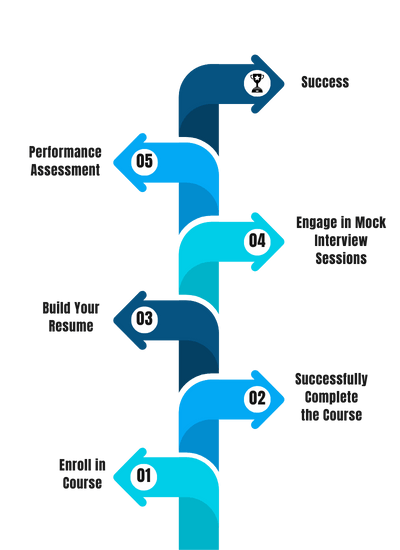
FAQ'S
- Classroom Training
- Online Training
- Corporate Training
- On campus Training
Career Assistance
- Build an Impressive Resume
- Attend Mock-Up Interviews with Experts
- Get Interviews & Get Hired
Training Certification
Earn your certificate
Your certificate and skills are vital to the extent of jump-starting your career and giving you a chance to compete in a global space.
Share your achievement
Talk about it on Linkedin, Twitter, Facebook, boost your resume or frame it- tell your friend and colleagues about it.
Upcoming Batches
What People Say
Our Partners
Need Customized Curriculum? Request Now
Structure your learning and get a certificate to prove it.

Our Clients
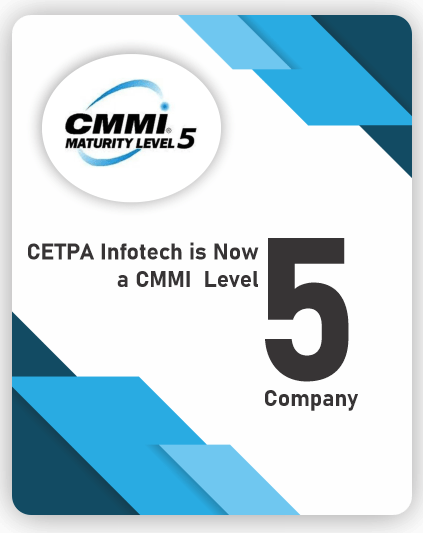
Our Placed Students
Related Courses
Review Us
Rajiv
![]() Thursday, 05 October 2023
Thursday, 05 October 2023
Java Full Stack Training In Noida
I have Great experience with Cetpa Infotech, excellent service! Trainers are very professional, Looking forward for more
Prachi Sharma
![]() Wednesday, 07 September 2022
Wednesday, 07 September 2022
Full Stack Java Developer Training In Noida
CETPA is the best organization for full stack course with java. They provide basic to advance level training .
Course Features
- Lectures 0
- Quizzes 0
- Duration 10 weeks
- Skill level All levels
- Language English
- Students 0
- Assessments Yes



